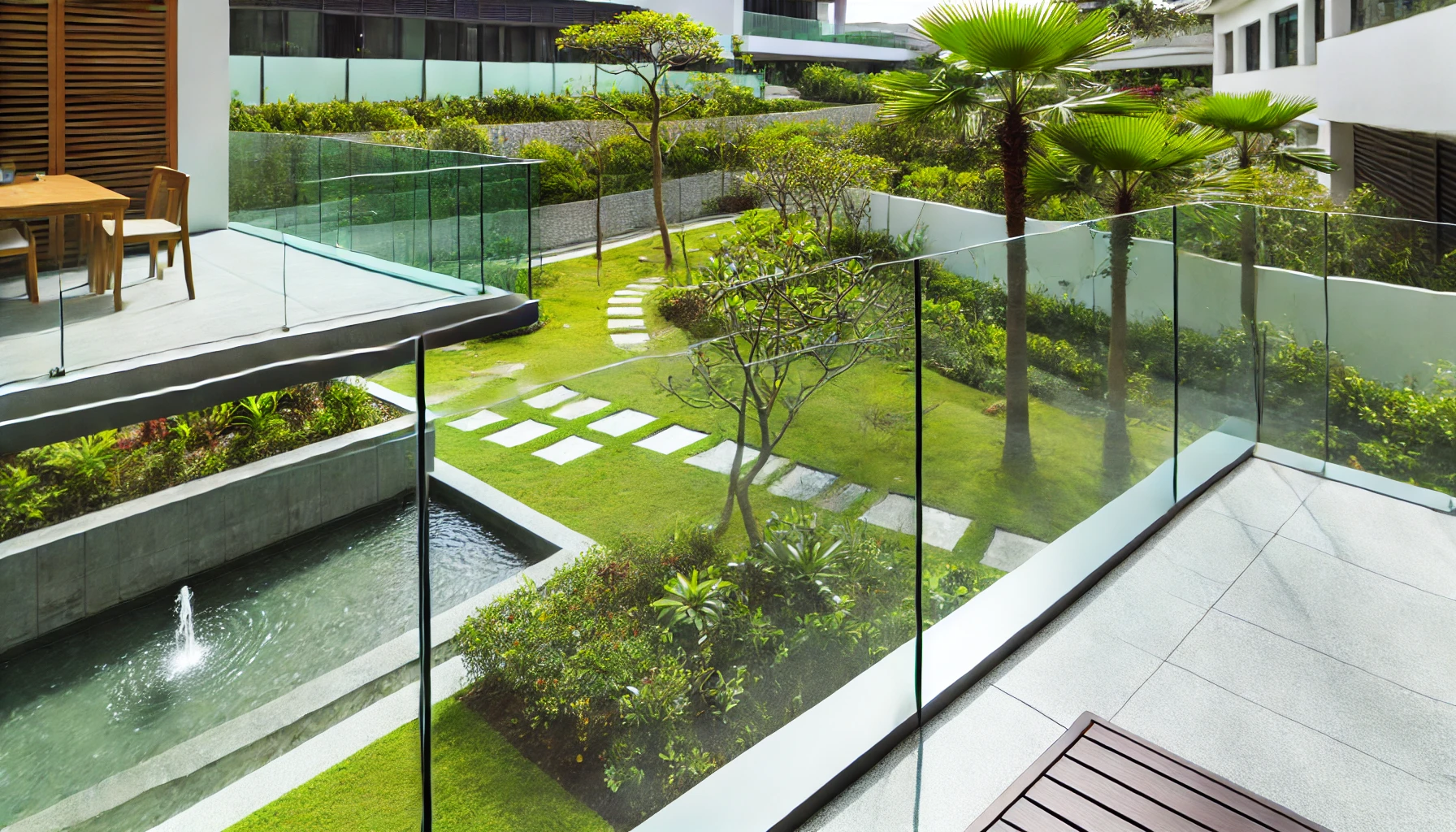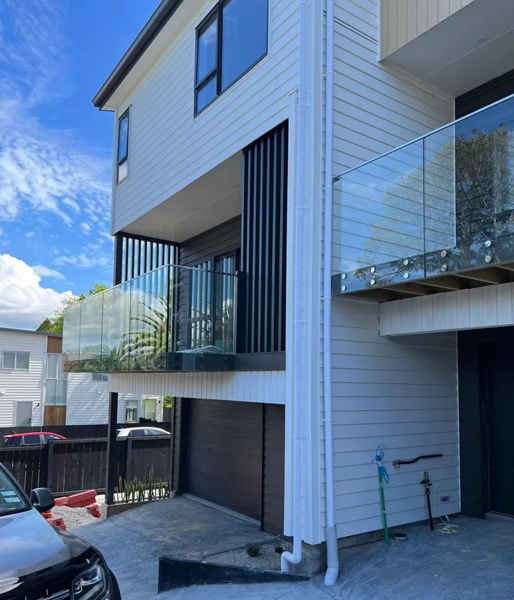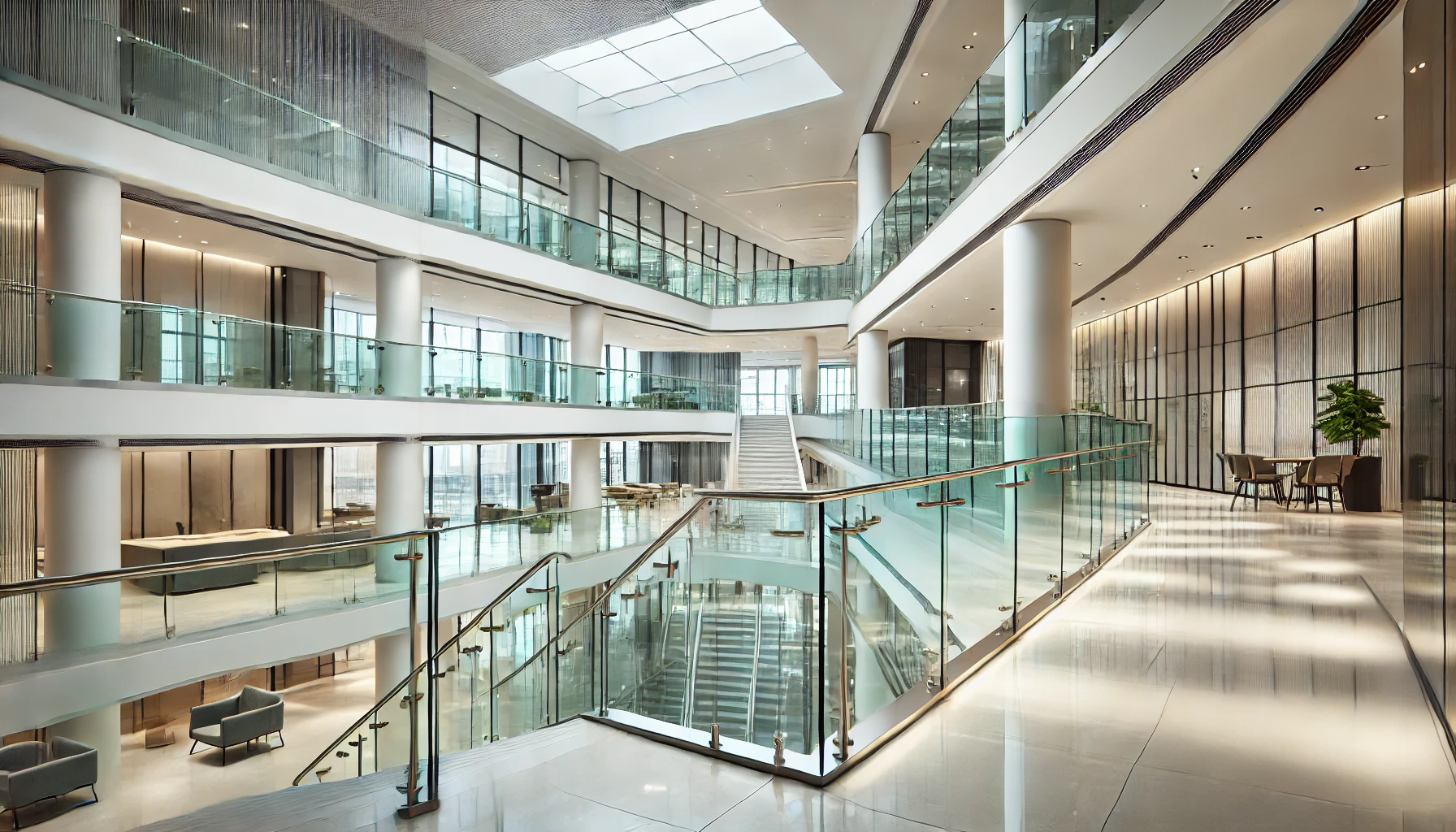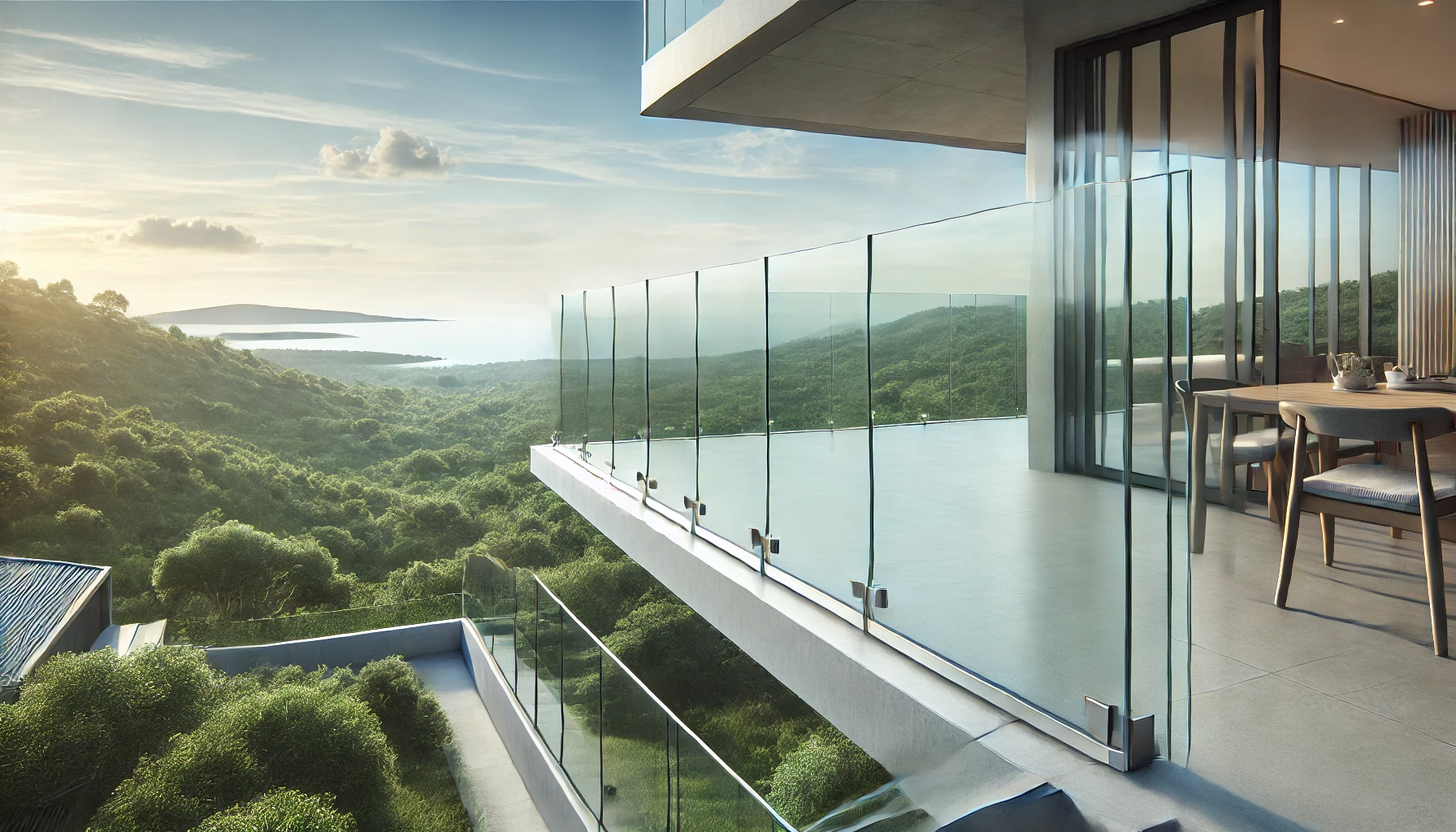Introduction
Glass railings have become an essential element in modern landscape design, offering a unique blend of safety, functionality, and aesthetic appeal. Whether used on terraces, decks, or around pools, glass railings provide a way to define outdoor spaces without obstructing views or interrupting the natural beauty of the surroundings. This article explores how glass railings can be effectively integrated into landscape design to create seamless transitions between different areas, enhancing both the visual and functional aspects of outdoor environments.
1. The Role of Glass Railings in Landscape Design
Glass railings play a crucial role in modern landscape design by allowing for unobstructed views while maintaining safety and structure. They help create a sense of openness and continuity, making outdoor spaces feel larger and more connected.
- Unobstructed Views: One of the primary advantages of glass railings is their ability to provide safety without blocking views. This is particularly important in landscapes with beautiful vistas, such as oceanfront properties, mountains, or lush gardens. Glass railings ensure that these views remain the focal point while providing the necessary barriers for safety.
- Seamless Integration: Glass railings can be seamlessly integrated into various outdoor settings, from decks and patios to garden pathways and pool areas. Their transparency allows them to blend effortlessly with the environment, creating a smooth transition between different spaces. This makes them an ideal choice for designs that aim to harmonize the built environment with nature.
- Safety and Functionality: In addition to their aesthetic benefits, glass railings provide essential safety features. They can be used to define edges, prevent falls, and create enclosures around pools or elevated areas. The strength and durability of modern glass materials ensure that these railings meet stringent safety standards while maintaining a clean and elegant appearance.
2. Design Considerations for Glass Railings in Landscape Design
When incorporating glass railings into landscape design, several factors must be considered to ensure they complement the overall aesthetic and functional goals of the space.
- Material Selection: The type of glass and hardware used in the railings should be chosen based on the specific environmental conditions and design goals. For instance, tempered or laminated glass is often recommended for outdoor use due to its strength and safety features. Stainless steel or powder-coated aluminum hardware is ideal for coastal or high-humidity areas, as these materials are resistant to corrosion.
- Height and Transparency: The height of the glass railings should be determined by their intended function. For example, railings around pools or elevated decks should be tall enough to meet safety regulations while still allowing for an unobstructed view. The transparency of the glass can also be customized with options like frosted or tinted glass to add privacy or reduce glare.
- Mounting and Framing: Frameless glass railings are a popular choice for landscape design because they offer a minimalist look and maximize transparency. However, framed or semi-framed options can also be effective, particularly in designs that incorporate a mix of materials. The mounting system should be carefully selected to ensure stability and durability, especially in areas exposed to wind or other environmental factors.
3. Enhancing Outdoor Spaces with Glass Railings
Glass railings can significantly enhance the functionality and aesthetic appeal of various outdoor spaces, creating seamless transitions that elevate the overall design.
- Decks and Patios: On decks and patios, glass railings provide a barrier that protects against falls while maintaining a connection to the surrounding landscape. They are especially effective in homes with scenic views, as they allow residents and guests to enjoy the scenery without interruption. Glass railings can also be paired with outdoor furniture and lighting to create a cohesive and inviting space.
- Pools and Water Features: Around pools and water features, glass railings offer a clear and unobtrusive way to ensure safety. They create a transparent enclosure that allows the pool or water feature to remain the centerpiece of the design. Additionally, glass railings can help reduce wind around the pool area, making the space more comfortable and enjoyable.
- Garden Pathways and Terraces: Glass railings can be used to define garden pathways or terraces, creating a sense of structure while allowing the beauty of the plants and landscape to shine through. This is particularly effective in contemporary garden designs where clean lines and minimalist elements are key. The railings can also serve as a subtle boundary between different areas of the garden, guiding movement without overwhelming the natural surroundings.
4. Case Studies: Successful Integration of Glass Railings in Landscape Design
Examining real-world examples can provide valuable insights into how glass railings can be successfully integrated into landscape design.
- Case Study 1: Cliffside Residence, Malibu
A cliffside residence in Malibu features glass railings on its expansive decks, which overlook the Pacific Ocean. The frameless glass railings were chosen to maximize the view and create a seamless transition between the indoor living spaces and the outdoor terraces. The railings are paired with stainless steel hardware to withstand the salty coastal air, ensuring long-term durability and minimal maintenance. - Case Study 2: Urban Rooftop Garden, New York City
In a New York City rooftop garden, glass railings are used to create a safe and stylish boundary around the perimeter. The railings allow for panoramic views of the city skyline while providing a clear barrier that enhances safety. Frosted glass panels are used in some areas to provide privacy from neighboring buildings, while clear panels are used to showcase the garden’s design and the cityscape beyond. - Case Study 3: Mountain Retreat, Aspen
A mountain retreat in Aspen integrates glass railings into its multi-level terraces, offering uninterrupted views of the surrounding mountains and forests. The railings are designed to blend with the natural environment, using wood and stone elements in the mounting system to complement the rustic aesthetic of the retreat. The result is a harmonious design that connects the built environment with the natural beauty of the landscape.
5. Maintenance and Longevity of Glass Railings in Outdoor Spaces
To ensure that glass railings remain beautiful and functional in outdoor environments, regular maintenance is essential.
- Cleaning: Glass railings should be cleaned regularly to remove dirt, pollen, and other debris that can accumulate on the surface. Use a mild glass cleaner and a soft cloth to avoid scratching the glass. For railings in coastal or high-humidity areas, rinsing with fresh water can help prevent salt buildup or corrosion on the hardware.
- Inspection: Periodically inspect the railings for signs of damage, such as cracks in the glass or corrosion on the metal components. Address any issues promptly to prevent further damage and ensure the safety of the railings.
- Protective Coatings: Applying a protective coating to the glass and metal components can help reduce maintenance needs and extend the life of the railings. Hydrophobic coatings can repel water and reduce the buildup of dirt, while anti-corrosion coatings can protect the hardware from rust and deterioration.
Conclusion
Glass railings are a versatile and aesthetically pleasing solution for creating seamless transitions in outdoor spaces. When thoughtfully integrated into landscape design, they enhance the beauty and functionality of the environment while maintaining safety and openness. By considering factors such as material selection, design integration, and maintenance, glass railings can provide a long-lasting and elegant addition to any outdoor setting. As landscape design continues to evolve, glass railings will undoubtedly remain a popular choice for those seeking to blend the built environment with the natural world.






